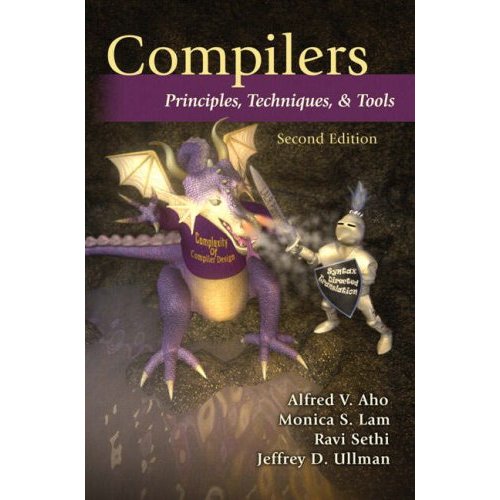
IfThenElsifElse
Control Structures 1 of 2 [24March08] As a Group of 3 (or 2)
Control Structures 2 of 2 [26March08] as a group of 3 (or 2)
Instructor
providing a working version of Phase 3 to assist everyone.
24March08
mkdir Phase3
cd Phase3
cp ~stewart/cs524/simpleP3/* .
Integer Declarations [17Mar08] Due 29March08 ** CANCELLED **
Chapter 6 Intermediate Code Generation
Practice Midterm [12March08, discussed 27feb08] Practice Midterm1 solutions [Lecture Wed]
Using SLRgen [13Feb08} to generate the Simple-LR parser tables
Expected results for Comments
Strings-FrontEnd
Strings-BackEnd
** Upd ** 25Feb08 with
Strings Sample
simple.lex for Phase 2
simple.lr for Phase 2 ** 10march08 **
Readings and Problems for Compile-Time Structures - Part 1 [*upd* 27Feb08]
Ch 4.5 Bottom-Up Parsing
InfoLab [discussion] 07Feb08
Ch4 Syntax Analysis [05Feb08]
Ch3 Lexical Analysis 28Jan08
Project [30Jan08 - GMCS 425 lab]
Project Structures
Resources **Upd26march08**
Calendar [project deadlines and mid terms] **Upd25feb08**
NOTE: We meet in GMCS 425 next Wednesday (30Jan08) to logon
to the Rohan Solaris/UNIX system and
start to examine our Compiler Project in detail.
General Introduction 23Jan08
An example of the beginning point of your project is given by the source code:
beta :=2;
readln(gamma);
alpha := 2 + beta * gamma;
if beta = 2 then
beta := beta + gamma * alpha + alpha;
writeln(beta);
end if;
A result from the compiler is to recognize the language structures
and represent them in an
Abstract Syntax Tree, displayed as
:=stmt readln :=stmt ifstmt
/ \ | / \ / \
beta 2 \list alpha + | |
gamma / \ | |
2 * == thenlist
/ \ / \ | writeln
beta gamma beta 2 | := stmt
The next step is to generate the SPIM assembly language.
For example,
the assignment statement, :=stmt, above corresponds to:
# Generate Assignment Statement
#
lw $t0,4($t8)
lw $t1,8($t8)
mul $t0,$t0,$t1
add $t0,$t0,2
sw $t0,0($t8)
where we load the values of beta and gamma from memory into their own
registers (t0 and t1, above), multiply the values together and store in t0,
add the constant 2 to register t0 and store the result back to the memory
location of alpha.
The project extends a working compiler in incremental stages over the semester. This involves effort, but is a good way to clarify the concepts covered in course lectures. We use UNIX and the C language to make effective use of the language tools lex (for lexical analysis) and yacc (for parsing) on Rohan. The working compiler already has the capabilities to process arithmetic statements, has a working symbol table, has a way to display internal workings of the compiler and generate assembly code for a machine named SPIM.
A significant software project, such as the one which is the basis of this course, should be approached from a Team point of view. The initial phases of your project will be done as an individual student, but later phases will be done as a member of a team. Students should be considering who they wish to partner with later in the semester for this 3-person activity.
SPIM is based on the MIPS R2000/R3000 emulator by
James R. Larus,
now with Microsoft Research,
and featured in the text: Computer Organization and Design: The
Hardware/Software Interface by Patterson and Hennessy,
Morgan Kaufmann Pub. The
file:
www.cs.wisc.edu/~larus/HP_AppA.pdf local
pdf file from
Larus.
Morgan-Kaufmann has generously allowed Larus to make available an
electronic copy in PDF of Appendix A: Assemblers, Linkers, and the SPIM
Simulator the text: Computer Organization and Design: The
Hardware/Software Interface by Patterson and Hennessy,
Morgan Kaufmann Publishers.